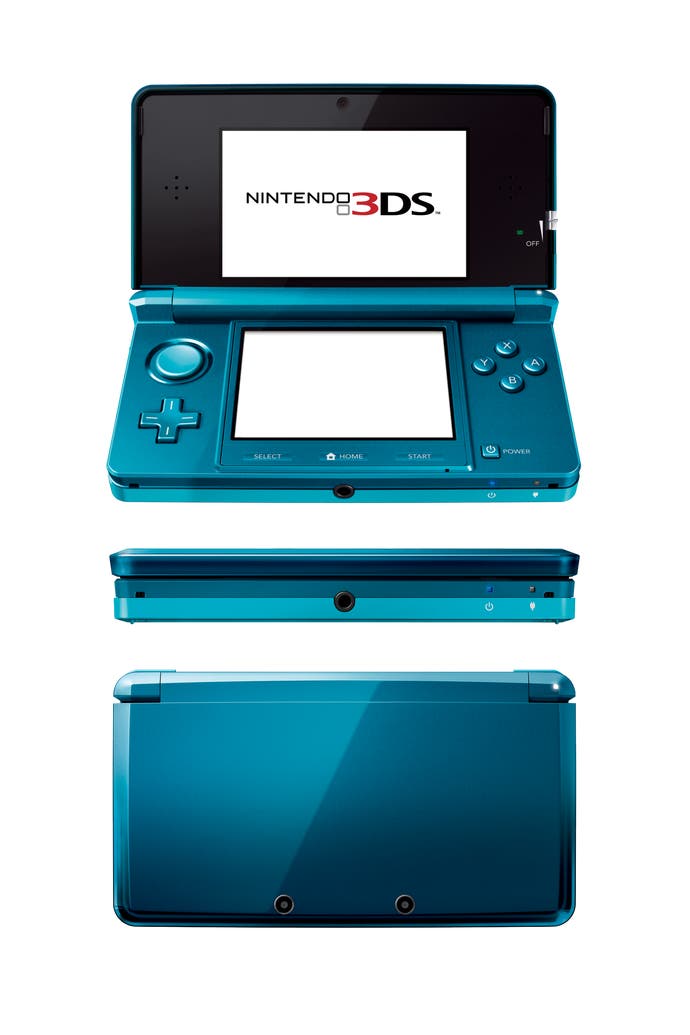Nintendo 3DS
Hands-on at E3 with the 3D handheld.
Here's the thing about Nintendo 3DS: even if it didn't offer 3D, you'd still want one. It's a new DS with hugely improved graphical performance - eclipsing PSP and getting close to Wii - a beautiful widescreen display, and an excellent analogue controller.
Its 3D screen (and camera), however, elevate it from a must-have games machine to a must-have consumer device of any kind. It's not perfect - there's no doubt that there are more flawless ways to view 3D out there. But it works without glasses, in your hands, in any lighting conditions - and works very well. Its simplicity and immediacy are devastating, and in their way make it more exciting and impressive than any other 3D experience you can have.
The screen needs to be viewed absolutely head on - tilt the 3DS just slightly to one side or the other and the image on the lenticular screen suddenly fractures into two shimmering overlays. With a handheld device, obviously, this isn't really a problem, although the machine's motion-sensing controls (which we weren't able to try) will have to be employed with care. There's definitely an optimum distance between your eyes and the screen if you want to view the sharpest 3D image, but you'll find you adopt this automatically without even thinking.
The 3D image has perhaps a little less background depth than the current cutting edge of stereoscopic 3D, but the beauty of 3DS is that the effect is greatly enhanced by the simple fact that you're holding it. Objects in the foreground, suspended between your hands, assume a reality they wouldn't projected on the far side of the room. You feel as though you can touch them.

The 3D works noticeably better with bright, colourful images (good thing it's a Nintendo machine, then). Dark, high-contrast scenes produce slight "ghosting" - like an imperfect analogue TV signal - that is a bit distracting, although it far from ruins the overall effect.
Nintendo's stroke of genius - the company once again showing its gift for lateral thinking in hardware design - is the 3D slider, allowing you to adjust the strength and depth of the 3D effect. You'll usually want it on full, but the subtler 3D effect with the slider set halfway is surprisingly lovely, and you might want to adjust it a little depending on how far the 3DS is from your face, or on what your own eyes find comfortable. And of course, it means you can turn 3D off altogether. It wouldn't occur to most other technology companies that sometimes you will simply prefer to view images in 2D - but you probably will.
Nintendo has a wide range of very brief 3DS demos to try at E3. Some are video, only one is fully interactive, while most are semi-interactive in-engine trailers and model-viewers. You can also try using the device's 3D camera.
The 3DS' presentation of movies - I watched a trailer for How To Train Your Dragon - is crisp and smooth, but the 3D effect is relatively subtle when compared to graphics generated by the machine itself. These are unbelievable. A Metal Gear Solid trailer following Snake through dense jungle vegetation and across a vertiginous rope bridge was breathtaking.
Another demo had a series of Nintendo models to view which you could pan around using the 3DS' analogue slider. Static scenes from New Super Mario Bros. Wii and Super Mario Galaxy were amazingly solid and tactile - and also happened to demonstrate how easily capable the 3DS is of doing justice to models from Wii games. A statue of Link was, if anything, more richly detailed than that in the Skyward Sword Wii demo running in the same room. But the best of all was an image of Pikmin standing amid tall plants; moving the view around this miniature diorama left me speechless, drawn into the small screen in my hands.








